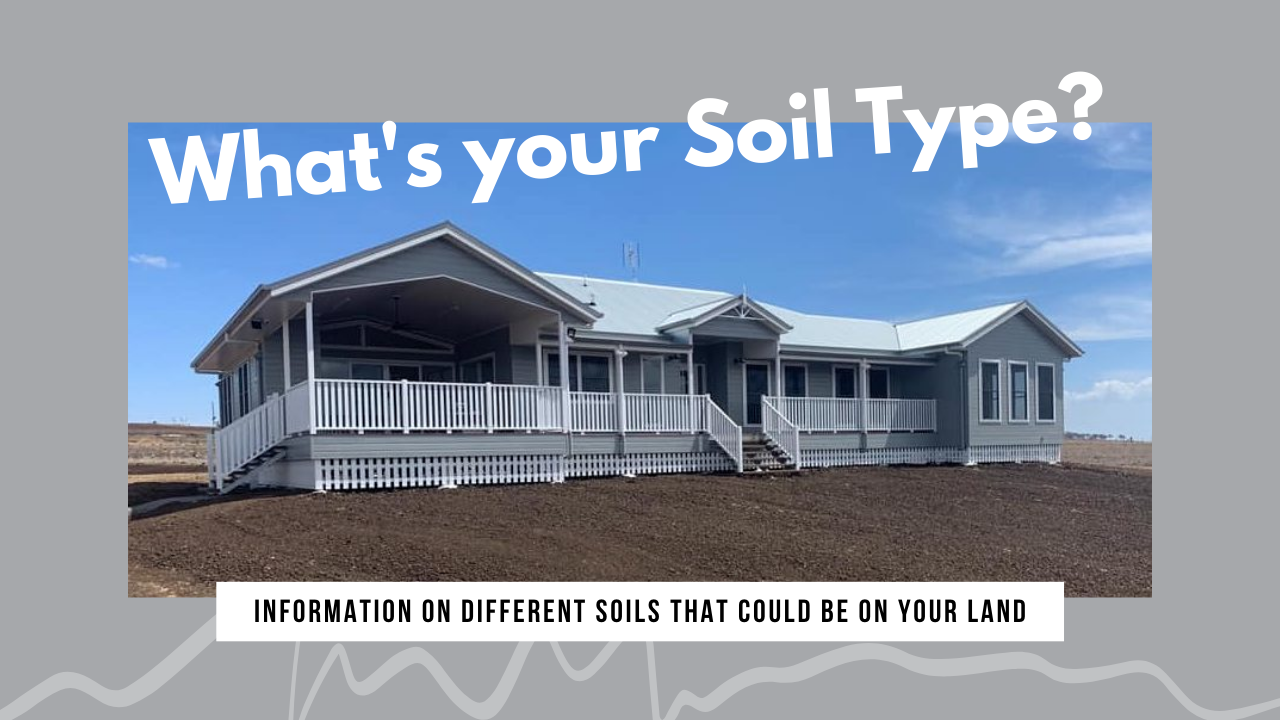
Soil type forms a major part of the foundations of your home. The movement and condition of the soil will affect the depth of the footing and piers of a home, which is determined by the Engineer after a Soil Test.
THE BELOW ARE THE MOST COMMON SOIL TYPES IN OUR REGION.
M: 20-40mm
MODERATELY reactive clay or silty sites, which may experience moderate ground movement from moisture changes. (These sites commonly include red/brown silty soils, some sandy clays and loamy soils.)
H1: 40-60mm
HIGHLY reactive clay sites, which may experience high ground movement from moisture changes. (These sites include some silty clays in the Toowoomba area and many of the sandy clays and basaltic clays in the Lockyer Valley.)
H2: 60-75mm
HIGHLY reactive clay sites, which may experience very high ground movement from moisture changes. (These sites include some silty clays in the Toowoomba area and many of the sandy clays and basaltic clays in the Lockyer Valley.)
E (E1): 75-100mm OR E (E2): 100-160mm
EXTREMELY reactive sites, which may experience extreme ground movement from moisture changes. (These sites include deep reactive clays, such as black and dark brown soils on the Darling Downs, but are also found throughout the Lockyer Valley and parts of Toowoomba. These sites typically demand quite expensive footing systems.)
P: PROBLEM SITE
As indicated previously the Site Classification must consider many aspects of the site, not just the reactivity of the soil. P Sites are those that include other factors that need to be brought to the attention of the owner, builder and footing designer.
A P Site Classification does not indicate a specific Y value and is described as a ‘Problem’ Site.
The reasons for a P Site Classification includes any of the following:
• Growth and/or removal of trees will cause abnormal moisture conditions in the subsurface soils;
• Unusually high moisture conditions caused by water flow, ponds, dams, etc;
• Sites with ‘loose’ fill which can either be ‘controlled’ or ‘uncontrolled’. The P Site Classification depends upon the depth and type of fill;
• Sites with poor bearing capacity, soft soils, or soils which are prone to collapse;
• Sites which for one reason or another cannot be classified as normal sites;
• The site may be subject to mine subsidence, landslip, collapse activity or coastal erosion.
If you would like to find out the soil type on your block it is best to organise a soil test by a reputable engineer. We recommend Reid Consulting Engineers or alternatively we can organise this for you through a preliminary agreement. A soil test will be required before proceeding to a fixed price contract.
Please note the above mentioned information is general in nature only. The condition of your site is determined by an Engineers Soil test.





